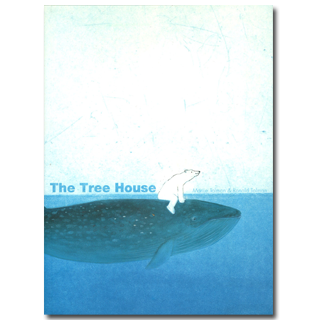 I bought this book at a giant used book warehouse called Wonder Book, in Frederick, MD, where I lived for four months in the winter and spring of 2007, which were by far the best four months of my entire life, so I wondered if the reason I love this book so much is because it is colored by my mood of that time. However several not-so-bad-either years later, I can say with a fair amount of certainty that I love this book for reasons that are pure and honest and, I believe, well and just deserved.
I bought this book at a giant used book warehouse called Wonder Book, in Frederick, MD, where I lived for four months in the winter and spring of 2007, which were by far the best four months of my entire life, so I wondered if the reason I love this book so much is because it is colored by my mood of that time. However several not-so-bad-either years later, I can say with a fair amount of certainty that I love this book for reasons that are pure and honest and, I believe, well and just deserved."Rain"was published in 1961, and is of course out of print now, though it pops up on ebay quite often.
I have tried to find out as much as I could about Virginia Parsons, the writer and illustrator of this book, but have not been too successful. It seems that she wrote and/or illustrated many wonderful children's books at a great time when picture books already acquired legitimacy and artistic recognition but had not yet become the unbearably pretentious examples of bad taste and lack of talent we overwhelmingly see today. I do have another book of hers in my possession right now having gotten it through interlibrary loan, and can reliably vouch that it has the same wonderful illustrations and a general happy and content feel as "Rain". I would say that if you like what you read here, it is a good idea to look for her books at used book stores and yard sales.
The book "Rain" alternates between color and black and white illustrations. I think both of her signature styles - the cartoony color images and the graphic black and white line drawings are equally strong and appealing, and I love the fact that she tells one story using two different styles.
Both sets of pictures really remind me of the way I used to draw as a kid - or at least tried to. I think that her images are so appealing, friendly and accessible that a child who sees them will easily be able to copy her style and draw his or her own pictures with freedom and confidence.
At the same time, the black and white pictures in particular are fairly complex and exciting to look at even if you are a grown up who likes art.
As with other books I admire, I love the fact that "Rain" does not offer any morals or lessons, but simply describes something that happens in our world, and informs the readers of things that happen, or could potentially happen when they do. While the loose, happy, innocent mood of the text - ducks are described in the book, policemen and mailmen who work even in the rain, gardens that grow better in the rain, and deserts, where it does not rain, and so on - is definitely a reflection of the times when the book was written, I feel like it possesses something extremely valuable that is totally missing from children's books today. I think that something is the freedom to be unconcerned whether the book "lives up" to some arbitrary standard. This allows for the text to be assertive and yet absurd, and the pictures to be lovely and expressive in exactly the way children love them to be.
Finally, (I saved one of the best things for last), I have to say that this book has the best endpapers I have ever seen. Coming from a person who rather obsessively investigates endpapers of used children's books in particular, I think that just looking at the inside cover of "Rain" makes the world a better place. I love the fact that it has nothing to do with contents of the book, I love the fact that it has fabulous colorful diamonds, I love all the people, objects and animals that are preciously contained within each one. I think that when children look at images such as this one, they have a slightly better chance of growing up into adults who still remember what it was like to be a kid. And that, I believe, is one of the most important things in the world.












 I checked this book out so many times from the library at the school where I worked once that the librarian just gave it to me. It was quite a generous gift (though I did donate a bunch of books in exchange) because this book is out of print and while you can still get a used copy it is quite expensive.
I checked this book out so many times from the library at the school where I worked once that the librarian just gave it to me. It was quite a generous gift (though I did donate a bunch of books in exchange) because this book is out of print and while you can still get a used copy it is quite expensive.



